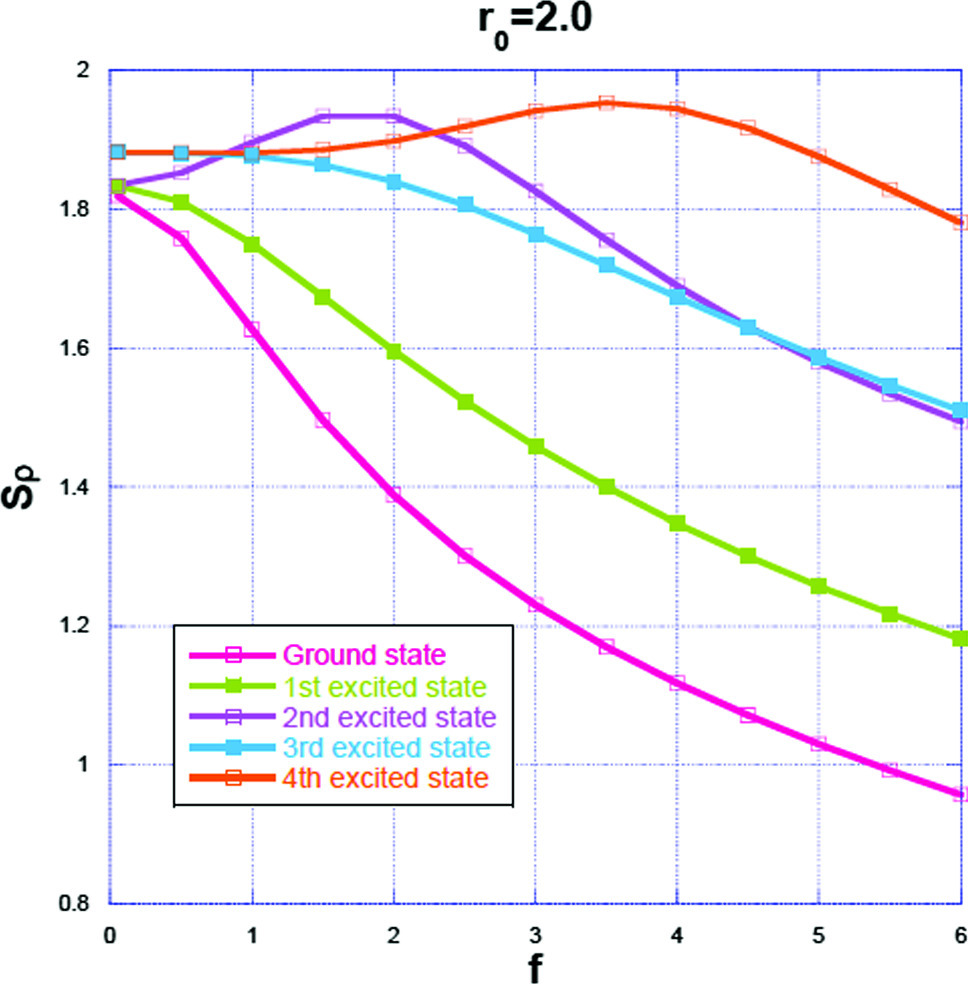https://doi.org/10.1140/epjd/s10053-024-00861-3
Regular Article - Quantum Information
A two-dimensional harmonic oscillator confined in a circle in the presence of a constant electric field: an informational approach
1
Departamento de Física, Universidad Autónoma Metropolitana-Iztapalapa, Av. Ferrocarril de San Rafael Atlixco 186, Iztapalapa, C.P. 09310, Cd. Mexico, Mexico
2
Department of Physics, Swami Shraddhanand College, University of Delhi, C.P. 110036, New Delhi, Delhi, India
3
Instituto de Física, Benemérita Universidad Autónoma de Puebla, Av. San Claudio y Blvd. 18 Sur, Col. San Manuel, C.P. 72570, Puebla, Pue., Mexico
Received:
30
January
2024
Accepted:
2
May
2024
Published online:
7
June
2024
In this work, we study an electron subjected to a harmonic oscillator potential confined in a circle of radius  and in the presence of a constant electric field. We obtain energies and eigenfunctions for three different confinement radii as a function of the electric field strength. We have used the linear variational method by constructing the trial function as a linear combination of two-dimensional confined harmonic oscillator wave functions. We calculate the radial standard deviation as a measure of the dispersion of the probability density. We also computed the Shannon entropy and Fisher information, in configuration and momentum spaces, as localization-delocalization measures for three different confinement radii and as a function of the electric field strength. We find that Shannon entropy and Fisher information are more reliable than variance in determining electron location. The behaviour of Shannon entropy and Fisher information curves is shown to depend on each specific state under study.
and in the presence of a constant electric field. We obtain energies and eigenfunctions for three different confinement radii as a function of the electric field strength. We have used the linear variational method by constructing the trial function as a linear combination of two-dimensional confined harmonic oscillator wave functions. We calculate the radial standard deviation as a measure of the dispersion of the probability density. We also computed the Shannon entropy and Fisher information, in configuration and momentum spaces, as localization-delocalization measures for three different confinement radii and as a function of the electric field strength. We find that Shannon entropy and Fisher information are more reliable than variance in determining electron location. The behaviour of Shannon entropy and Fisher information curves is shown to depend on each specific state under study.
© The Author(s) 2024
 Open Access This article is licensed under a Creative Commons Attribution 4.0 International License, which permits use, sharing, adaptation, distribution and reproduction in any medium or format, as long as you give appropriate credit to the original author(s) and the source, provide a link to the Creative Commons licence, and indicate if changes were made. The images or other third party material in this article are included in the article’s Creative Commons licence, unless indicated otherwise in a credit line to the material. If material is not included in the article’s Creative Commons licence and your intended use is not permitted by statutory regulation or exceeds the permitted use, you will need to obtain permission directly from the copyright holder. To view a copy of this licence, visit http://creativecommons.org/licenses/by/4.0/.
Open Access This article is licensed under a Creative Commons Attribution 4.0 International License, which permits use, sharing, adaptation, distribution and reproduction in any medium or format, as long as you give appropriate credit to the original author(s) and the source, provide a link to the Creative Commons licence, and indicate if changes were made. The images or other third party material in this article are included in the article’s Creative Commons licence, unless indicated otherwise in a credit line to the material. If material is not included in the article’s Creative Commons licence and your intended use is not permitted by statutory regulation or exceeds the permitted use, you will need to obtain permission directly from the copyright holder. To view a copy of this licence, visit http://creativecommons.org/licenses/by/4.0/.





